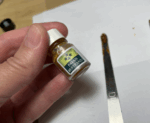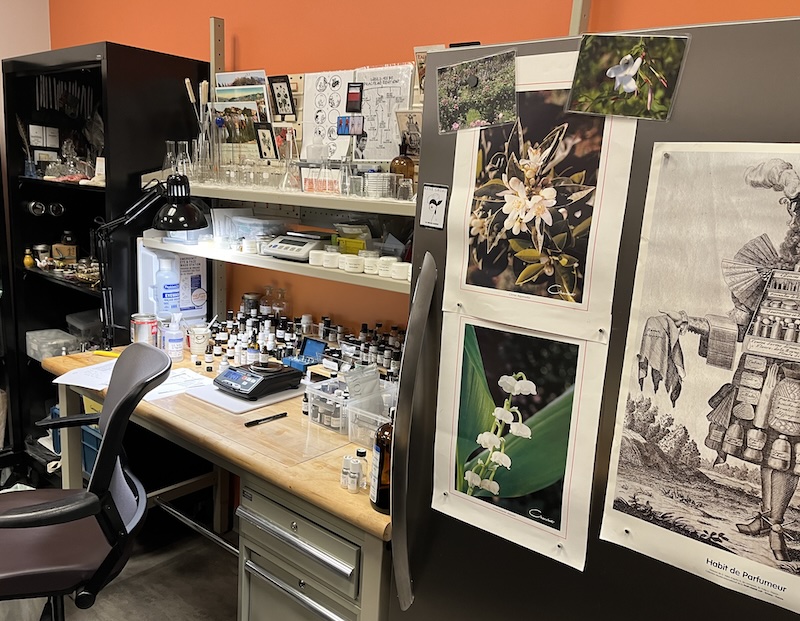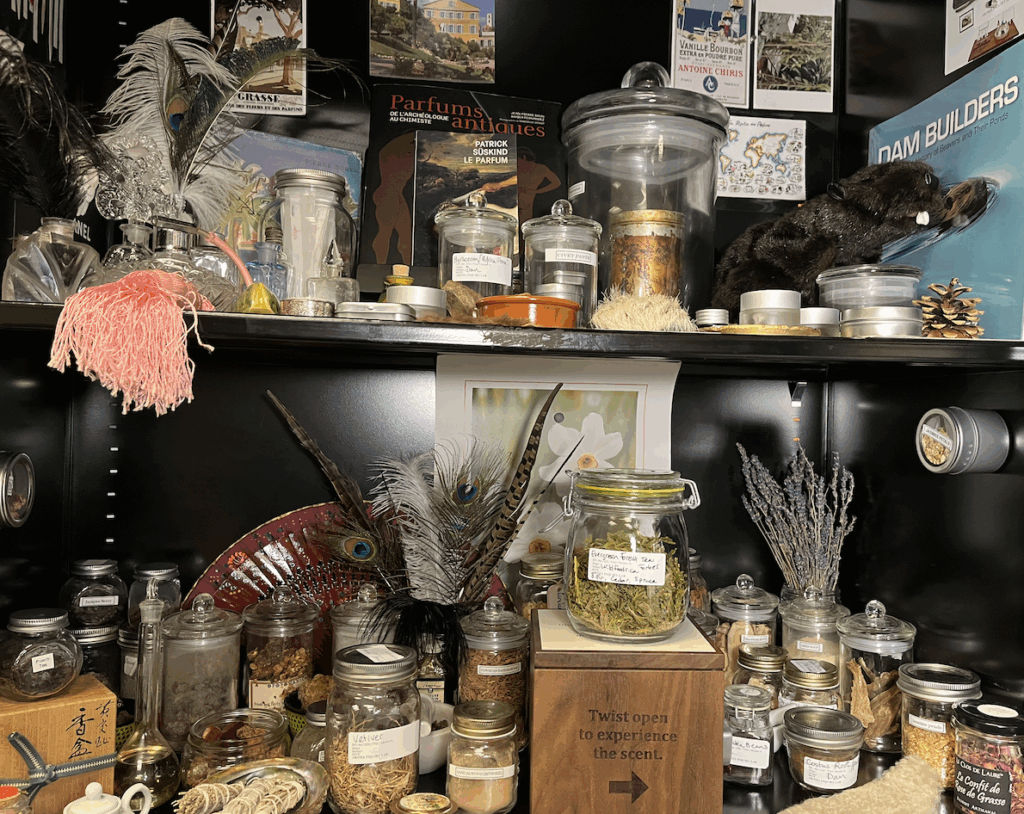The research-informed design and infrastructure of the Aroma Lab, while modest, reflects insights that I developed from my site-specific doctoral field work research on aroma-focused educational environments and scent-themed features in the built and natural environments that are unique to the UNESCO-Heritage site of Grasse, France [that you can read more about in my doctoral dissertation], and other similar environments I have researched in North America.
A materials-centered focus

A tiny vial of precious Iris Resinoid from my visit to Payan Bertrand in Grasse, France.
The intentional choice of the word ‘aroma’ (rather than ‘smell’) reflects the original meaning of this term in reference to ‘fragrant materials.’ The word ‘inquiry’ is underwritten by my own educational philosophy and pedagogical orientation to self-directed and inquiry-based learning (in contrast with didactic, teaching as transmission, which my work critiques). The naming of the lab also serves to differentiate its purpose.
In contrast with sensory and multi-sensory paradigms that are concerned with physiological processes and affective internal states the Aroma Lab is, instead, informed by the multi-modal paradigm that focuses on the tangible affordances of materials, objects, and environments as resources for literacy, learning, and communication (e.g., ‘sound’ is a modality; whereas hearing is a sensory process).
This distinction, between making versus ‘sensing,’ also informs my current research program, which similarly centres on the material, structural, and environmental contingencies of practice-based learning, literacy, and communication [which you can read about on in the detailed overview of my research program here].
Infrastructure
While the lab is not designed for commercial manufacturing, it features a research-informed and purpose-built infrastructure that includes a full body safety wash station, several mobile eye wash stations, targeted ventilation, flammable materials safes, downdraft tables, locking cabinets, a dedicated dishwasher, custom refrigerator and WHMIS labeling for aroma chemicals (which includes essential oils, which are also technically, chemicals).
While my role as operator of the aroma lab’s infrastructure is not my full time occupation, my labour maintaining the lab is supported indirectly through my research activities and participation in knowledge mobilization projects, consultations on research prototypes and projects, and facilitation of workshops and visits with students from local and international universities (which require an honoraria for my time and workshop materials). While the majority of material resources in my aromatic archive/library are my own and not paid for by the university, collaborating research and knowledge mobilization partners contribute to the funding and maintenance of materials specific to their projects.

